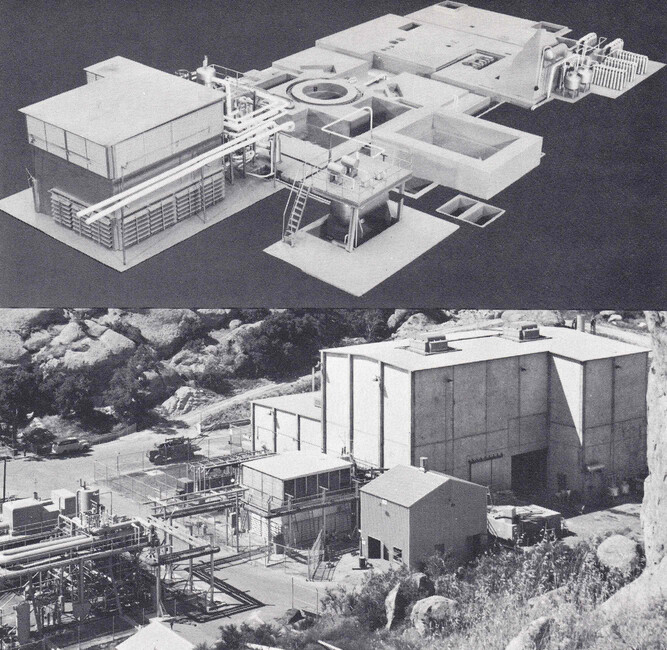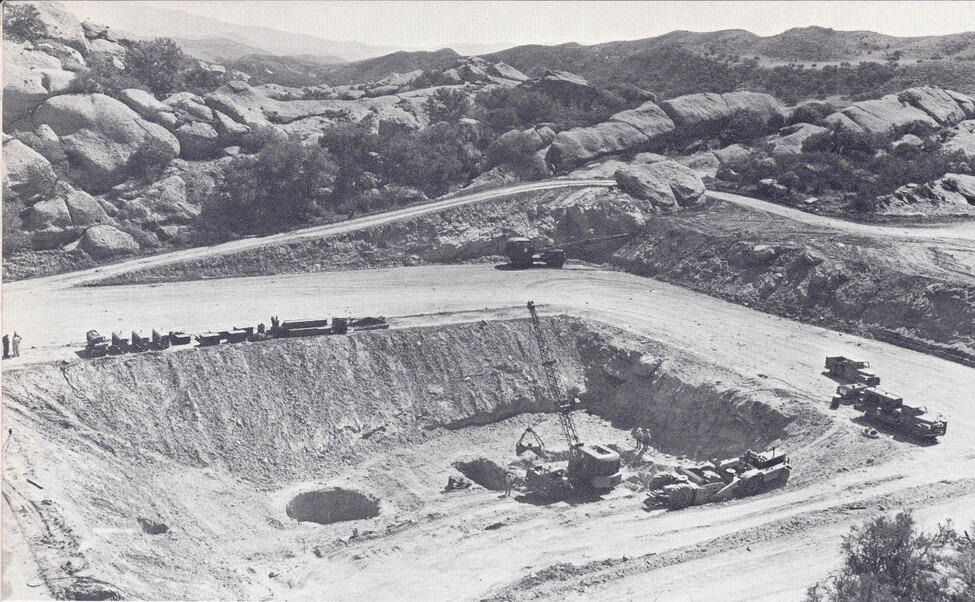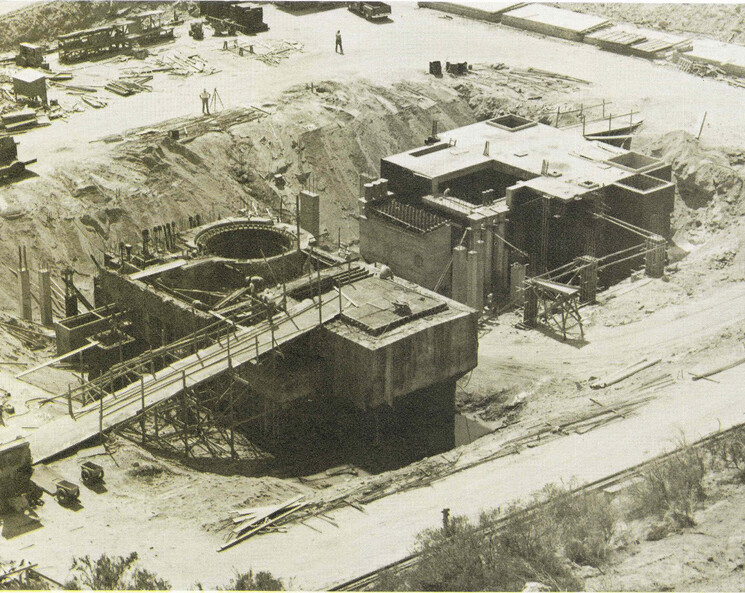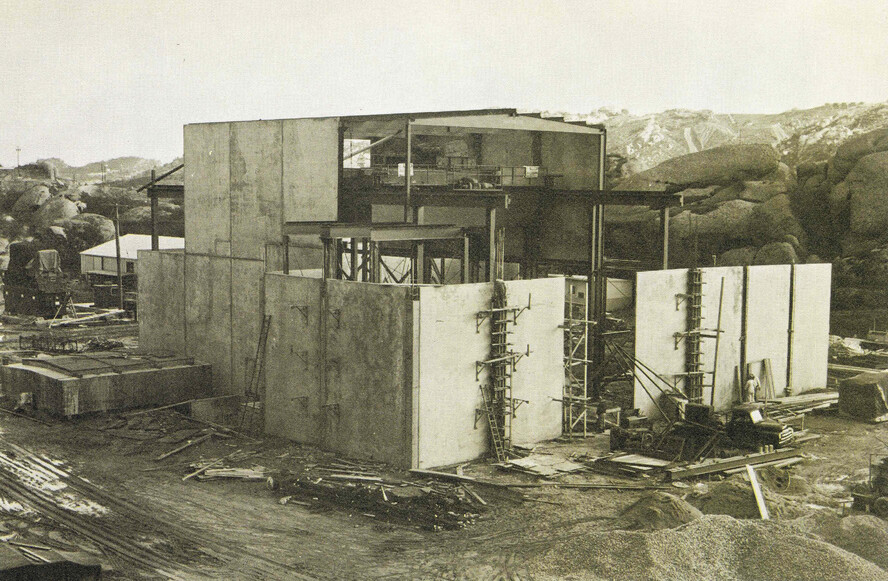Construction of the Sodium Reactor Experiment
Thread
2024-05-18 00:00:00 -0700The Sodium Reactor Experiment (SRE) was a prototype reactor 27 miles NW of LA that served as a technology demonstration of sodium-cooled, graphite-moderated reactors (aka SGRs). In the 1950s, it was thought that the combination of high-temperature, low-pressure liquid metal sodium coolant with highly fuel-conservative neutron moderation would form a likely candidate for low-cost commercial nuclear power plants.
The Santa Susana Field Laboratory was Atomics International's nuclear reactor skunk works. They developed and tested all kinds of reactor components and reactors there.
To slow down the neutrons, moderators of graphite were used. They were surrounded by dimpled hexagonal zirconium cans to prevent the sodium from interacting with the graphite. Some of the moderator corners were scalloped to allow room for experimental channels and control rods. With moderated neutrons, SGRs can run on low-enriched or possibly even natural uranium, whereas fast-neutron reactors require higher enrichments (e.g. HALEU/MEU) or plutonium.
This huge fuel handling machine could be coupled to the loading face. A fuel bundle would be picked up from the plug and lifted all the way up into the shielded cask. Then it could be moved out and replaced with a fresh assembly. In this sense, SRE pioneered a lot of the modern thinking and mechanisms in sodium-cooled reactor fuel handling.
Much was learned at SRE, and a full-scale demonstration reactor of the SGR type was built and operated at Hallam, Nebraska based on its experience. The SRE became famous when tetralin leaked and clogged a channel, leading to fuel melt, and the SGR concept became unpopular. However, the capabilities of SGRs are strong. I found the pamphlet that all these photos came from on ebay and scanned them at 600 dpi. You can see dozens more pictures with good captions here.
More
You can find more info at:Reader comments




